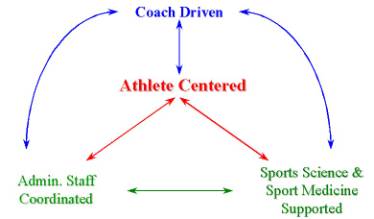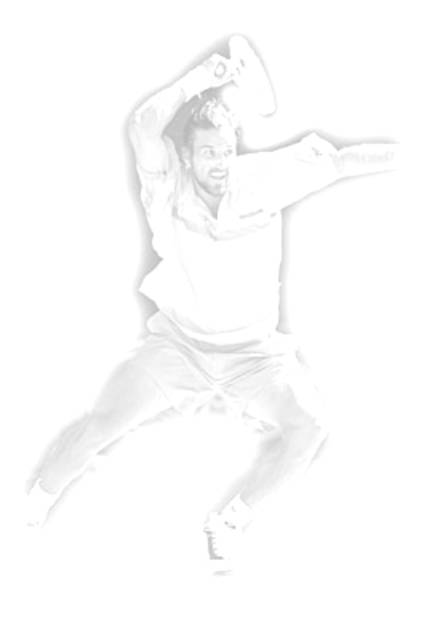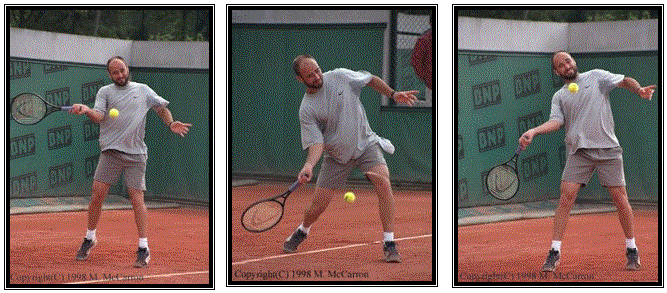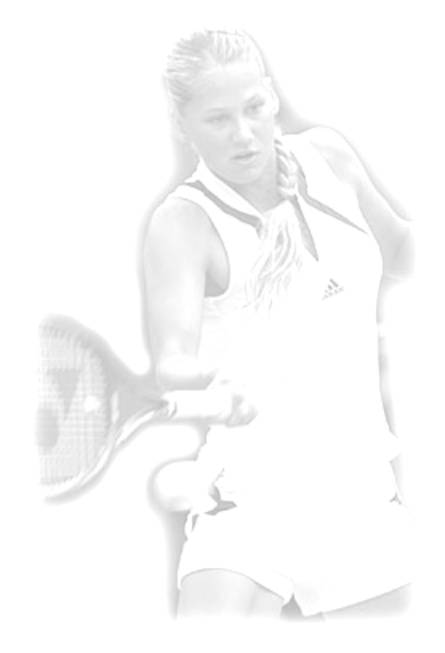<% ns_puts [mkm_getnavbar] %>

Bollettieri
Development
Philosophy
Peter D. McCraw
IMG Academies – Bollettieri Tennis Academy
Level
2 - Coaching & Training Philosophy
Page 2
 Our
training methodology identifies
and integrates the physical, technical,
tactical, psychological, nutritional
and environmental aspects of athletic training and performance. It also
incorporates the principles of growth
and development.
Our
training methodology identifies
and integrates the physical, technical,
tactical, psychological, nutritional
and environmental aspects of athletic training and performance. It also
incorporates the principles of growth
and development.
It is athlete centered and coach driven, ensuring that athletic training is both tennis-specific and tailored to each student’s needs. It is supported and assisted by sport science, sport medicine expertise and administrative staff.
Athlete
centered means that each student
undergoes regular evaluation of all aspects of their performance, training
and development.
We work hard
to maintain a clear focus on the optimal short
and long-term preparation needs
of each student.
development.
We work hard
to maintain a clear focus on the optimal short
and long-term preparation needs
of each student.
We conduct physical evaluations and testing each semester to monitor endurance, strength, power, speed, and flexibility. Students with muscular imbalances are prescribed remedial programs and monitored regularly. Skeletal alignment of the ankle, knee, hip, vertebrae and shoulders are monitored through the critical times of growth and development, with special attention being paid to injury prevention conditioning of the shoulder complex. Where necessary, we also perform blood and sport vision testing for those students that demonstrate a need for these services.
All technical, tactical and ancillary capacities are developed and complemented with tennis specific physical and mental preparation. These factors are fully integrated and sequenced by the periodized annual training and performance plans we develop for each group. All-in-all, we place the single biggest emphasis on the process (training and performing to one’s actual best capacity) rather than the outcome (winning). After all, life goes on well after they play their last professional of college match.
Level
3 - Bollettieri Teaching Philosophy
We have found there is no better way to instill confidence in a student and credibility among the staff than by adopting a uniform system for drilling, stroke production and tactics we teach. Given the structure of the program and size of the facility, it becomes impossible for Nick to oversee the daily development of each student.
Our solution
lies in the development of a common coaching and teaching language –
designed to ensure that every student receives the same fundamental
instruction. This creates a
process some call synergy - I call it three-way
confidence. Confidence from the coach by believing in the knowledge they have, confidence
from the student in the instruction they are receiving and confidence
in the system by knowing that the collective effort of each days program
has impacted the lives and games of as many students as possible.
As an example
of our teaching philosophy, we instruct all our students to achieve the lock-in position
on the forehand. Andre Agassi demonstrates this position in the three
photos below: 
Figure 1
Figure 2
Figure 3
Figure 1 - If the ball is within the contact zone of a player with a
semi-western forehand grip, the angle of the arm and racquet will be
90-90-90.
The butt-cap of the racquet will point at the ball – thus
creating a position of butt-end leverage, or the lock-in
position.
Figures
2 & 3
- For balls outside of the contact zone on the forehand, the lock-in
position will have the angle between the wrist and racquet at 90 (right angle).
The
butt-cap of the racquet will point at the ball just prior to contact,
however, the angles of the arm will vary according to the height of the
ball and size of the player.
Level
4 - Personal Coaching Style
The
final level in our philosophy pyramid is represented by each coach’s
personal style. Given the
diverse range of age, skill level and cultures our students represent, it
is each coach’s personal style than brings the whole system together. When it’s all said and done, the process of athlete development
is based building a relationship with each student. Knowledge is one thing, conveying the message is another.
Giving
each coach the freedom to develop their own style is paramount to building
a relationship of trust, respect and belief in both the student and coach.
Without it, the development process is reduced to theoretical
principles and unrealistic objectives.
development
is based building a relationship with each student. Knowledge is one thing, conveying the message is another.
Giving
each coach the freedom to develop their own style is paramount to building
a relationship of trust, respect and belief in both the student and coach.
Without it, the development process is reduced to theoretical
principles and unrealistic objectives.
In
an attempt to cultivate each coach’s style, we encourage them to
formulate their own answers to
questions such as:
-
What’s your philosophy on life?
-
What’s your philosophy on coaching
-
What’s your philosophy on sport and on tennis
-
Why do you coach and what are your goals as a coach?
Again,
the answers to these questions do not come easily.
However, the process is not only rewarding personally, but
the pay-off results in long lasting benefits to the program and ultimately
each student they work with.
Ultimately
time spent clarifying your long-term development philosophy, along with
your coaching and teaching philosophy will go along way towards producing
collegiate and professional players. In addition to this, it will provide each student with the necessary
life skills to pursue their dreams and goals long after they leave the
sporting arena.
Your comments are welcome. Let us know what you think about this article by emailing us here at TennisONE
Peter D. McCraw
High
Performance Development Coach
IMG Academies – Bollettieri Tennis Academy
He is a member of the USPTA and a Specialist in
Competitive Player Development.
He holds a Post Graduate Degree in Human Movement
from Deakin University – Australia.
Last Updated 5/15/01. To contact us, please email to: webmaster@tennisone.com
TennisONE is a registered trademark of TennisONE and SportsWeb ONE; Copyright 1995. All rights reserved.
